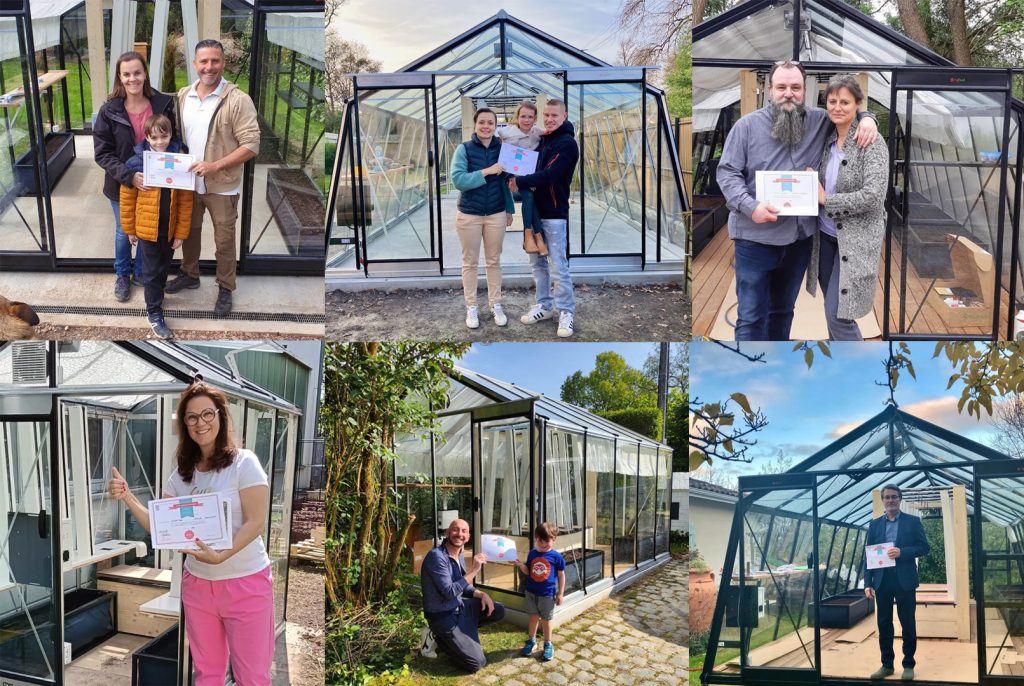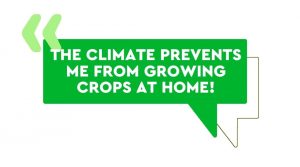In the beginning (almost 10 years ago), our project was motivated by a need and a vision. It was about reconnecting as many people as possible with their food and decentralizing production to meet an ecological challenge.
Today, our community is well established, with over 1,000 greenhouses installed in Europe and around the world. Our motivation now is to support this large family in their daily lives and to continue to feed the common good by expanding a model that has proved its worth.
By joining our committed and learning community, what impact will you have? How will your contribution to society support your individual issues?

The question of the impact of the greenhouse’s life cycle compared with conventional or organic production methods inevitably arises.
Growing food at home in a greenhouse is a clear response to intensive agriculture and all its externalities. Through ultra-local production, our solutions gradually offset their carbon debt over their life cycle (natural fertilizers, marginal energy consumption, less vehicle travel, less food waste, reduced air and water pollution, etc.). See our article on this subject.
It’s a fact of life that dozens of farms are closing every day, often in favour of soil artificialisation or intensive farming for biofuels. Aquaponics is a soil-less technique that allows crops to be grown in the garden, but also in polluted or unfertile areas, particularly in towns and cities. For example, our greenhouses are also installed on roofs.
In the face of repeated food scandals and growing uncertainty about labels and brands, growing your own is the ultimate in traceability. Besides, are you really aware of the residual nutritional content of the fresh produce you buy in the shops?
No longer using synthetic pesticides, which end up on our plates and have an impact on our health, could help to redevelop biodiversity, which is quite simply essential to our ecosystems. See our article on this subject.
Like food shortages, water shortages will continue to multiply. The principle of recirculating cultivation (aquaponics or bioponics) saves 80 to 90% water and works with rainwater collected by the greenhouse. See our article on this subject.
By being supported within a learning community, we give back to our society the knowledge linked to food production, the satisfaction of self-sufficiency but also an example for our future generations.
The list of benefits goes on and on. If you’d like to find out more, visit our Myfood wiki or talk to our team members:
Now, having spoken at length on the phone to more than 15,000 people over the last 8 years, we have a very clear understanding of the obstacles to self-production in our Western countries. And that’s why Myfood makes it possible.
This is what we hear every day:

To be more than 60% self-sufficient in fruit and vegetables, you need to be either retired and in good shape, or a part-time market gardener. Between work, family, travel, activities, etc., our modern lives have made it very complicated to alternate between work and gardening.

The knowledge needed to cultivate a vegetable garden has largely been lost. Many people have either never gardened before and don’t know where to start, or the vegetable-growing experience comes up against discouraging difficulties (difficult soil, pests, watering, weeding, unsuitable varieties, etc.).

The reality of the land and planning practices means that on average gardens no longer exceed 500m², and are rapidly cannibalised by the terrace, swimming pool, trampoline, etc. Only a few square metres are left for the vegetable garden, making self-sufficiency impossible. All that’s left is a few square metres for the vegetable garden, making self-sufficiency impossible.

Over the last few years, we’ve sadly been treated to a festival of nasty climatic surprises for traditional vegetable gardens: heat spikes during the holiday period that burn crops, excessive rain that halts growth and brings down mildew, storms or hail that destroy crops, late frosts, and so on.
Faced with these difficulties, Myfood provides an unbeatable value proposition in response to these pain points:
Discover the Family greenhouse, and don’t delay in making an impact on an individual scale.